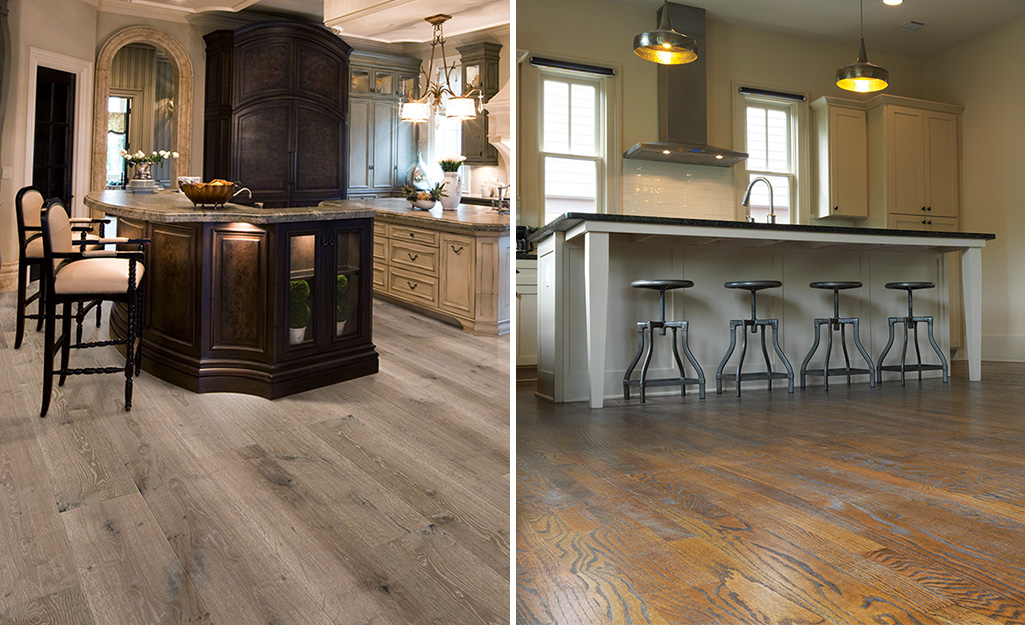When it comes to choosing the perfect flooring option for your home or office, the decision often comes down to engineered wood vs. solid wood flooring. Each type has its own unique characteristics and benefits, making the choice a bit challenging. In this comprehensive comparison guide, we will explore the differences between engineered wood and solid wood flooring, helping you make an informed decision based on your specific needs and preferences.
The Basics: Engineered Wood Flooring
Engineered wood flooring is crafted by layering real wood veneers over a plywood or high-density fiberboard (HDF) core. This construction technique provides stability and durability to the planks. Engineered wood floors can come in various thicknesses, but they all offer the unmistakable beauty of real wood. It’s important to note that engineered wood flooring should not be confused with laminate flooring, which is a synthetic product that mimics the look of wood.
The Classic Choice: Solid Wood Flooring
Solid wood flooring, as the name suggests, is made from solid pieces of wood. Each plank is cut from a single piece of timber, showcasing the natural grain patterns and characteristics of the wood species. Solid wood floors have a timeless appeal and offer a warm and authentic look that many homeowners love. They can be sanded and refinished multiple times, allowing for long-term durability and the ability to adapt to changing interior design trends.
Comparing Durability
When it comes to durability, both engineered wood and solid wood flooring have their advantages. Engineered wood flooring is less prone to expansion and contraction due to changes in humidity, making it suitable for areas with fluctuating moisture levels. However, it’s important to choose engineered wood with a thick enough top layer to ensure it can be refinished if needed.
Solid wood flooring, on the other hand, is known for its exceptional durability and longevity. With proper care and maintenance, solid wood floors can last for generations. They can be sanded and refinished numerous times, which helps to remove scratches, stains, or signs of wear and tear.
Resisting Moisture and Temperature Changes
When it comes to moisture resistance, engineered wood flooring has the upper hand. The layered construction of engineered wood provides better stability and reduces the risk of warping or cupping caused by moisture. This makes it a suitable option for areas with high humidity, such as basements or kitchens. However, it’s still important to wipe up any spills promptly to prevent damage.
Solid wood flooring is more susceptible to moisture, and exposure to high humidity or standing water can cause the wood to expand, warp, or even develop mold and mildew. It’s crucial to avoid installing solid wood flooring in areas prone to moisture or to take preventive measures, such as using dehumidifiers or applying protective coatings.
Installation Options and Ease
Both engineered wood and solid wood flooring offer different installation options. Engineered wood flooring can be installed using various methods, including floating, glue-down, or nail-down. This flexibility allows for easier installation, particularly in areas where traditional nail-down installation may be challenging.
Solid wood flooring is typically installed using the nail-down method, which requires nailing each plank directly to the subfloor. This installation process can be more time-consuming and may require professional assistance.
Maintenance and Refinishing
When it comes to maintenance, both engineered wood and solid wood flooring require regular care to preserve their beauty and longevity. Routine cleaning, such as sweeping or vacuuming, is essential to remove dirt and debris that can scratch the surface.
Engineered wood flooring typically has a protective finish, such as a layer of aluminum oxide or polyurethane. This finish provides some resistance to stains and wear, but it may still require occasional refinishing, depending on the thickness of the top layer.
Solid wood flooring offers the advantage of being able to be sanded and refinished multiple times. This allows you to restore the floor’s original beauty and address any scratches or imperfections that may occur over time.
Considering Cost Factors
Cost is an important consideration when choosing between engineered wood and solid wood flooring. Engineered wood flooring tends to be more budget-friendly compared to solid wood. However, the cost can vary depending on factors such as the quality of the materials, the thickness of the top layer, and the specific wood species chosen.
Solid wood flooring, while generally more expensive, offers the benefit of increasing the value of your home. The natural beauty and durability of solid wood can be an attractive feature for potential buyers and may contribute to a higher resale value.
Conclusion
Choosing between engineered wood and solid wood flooring ultimately depends on your specific needs, preferences, and budget. Engineered wood flooring offers stability, moisture resistance, and a wide range of design options. Solid wood flooring provides authenticity, durability, and the ability to refinish multiple times.
Consider factors such as the location of the flooring, the level of foot traffic, and the desired aesthetic when making your decision. If moisture or fluctuating humidity is a concern, engineered wood flooring may be the better choice. If authenticity and long-term refinishing options are essential, solid wood flooring may be the preferred option.
Both options have their own unique charm and can transform your space with their timeless beauty. Assess your needs, explore the available choices, and select the flooring that aligns with your vision and lifestyle.
Remember to consult with flooring professionals to ensure proper installation and maintenance for your chosen flooring option. With the right choice, you can enjoy the beauty and durability of wood flooring for years to come.

